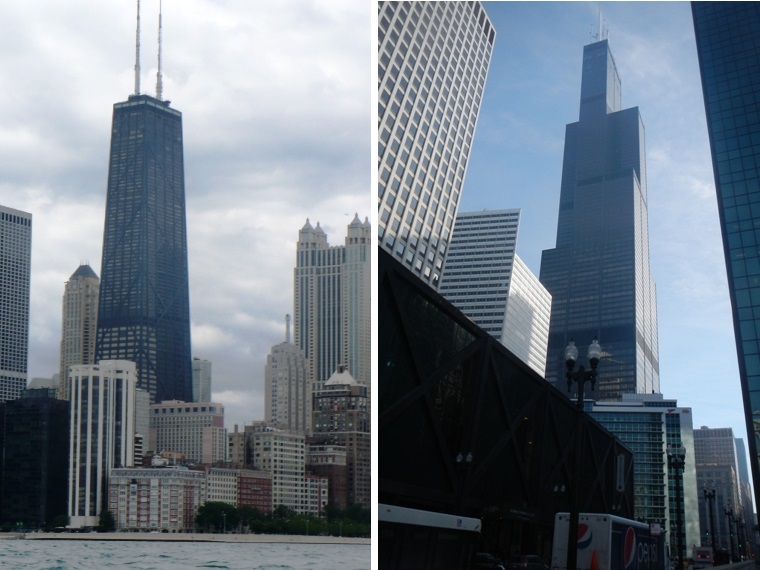A remarkable Chicagoan, structural engineer Fazlur Khan, made possible the ultra-tall buildings that are springing up in various parts of the world. Khan, in collaboration with architect Bruce Graham, developed tubular designs as a way to go even higher than allowed by the skeleton method of building construction.
Tubular designs more closely resemble an exterior skeleton, or exoskeleton, such as insects have. They form a tough structure that wraps around the building. These designs effectively carry the weight of the building while resisting the tilting and wind loads encountered in super tall buildings.
In Art of the Skyscraper, Mir Ali explains that Fazlur Khan’s first purely tubular design was Chicago’s 43-story Dewitt-Chestnut Apartments (1965- ). Khan went on to design the 100-story John Hancock Building (1968- ). The Hancock Building has prominent exterior trusses, causing the style to be called a trussed tube. According to Khan's daughter, Yasmin Khan, his design for the 108-story Willis (Sears) Tower (1973- ) is modeled after a pack of cigarettes. The design is called bundled tubes. He went on to design many other notable buildings and his design principles are used for most ultra-tall buildings worldwide.
For more information see the booklist: Skyscrapers in Chicago



Add a comment to: Fazlur Khan and Tubular Designs for Skyscrapers: Technology That Changed Chicago